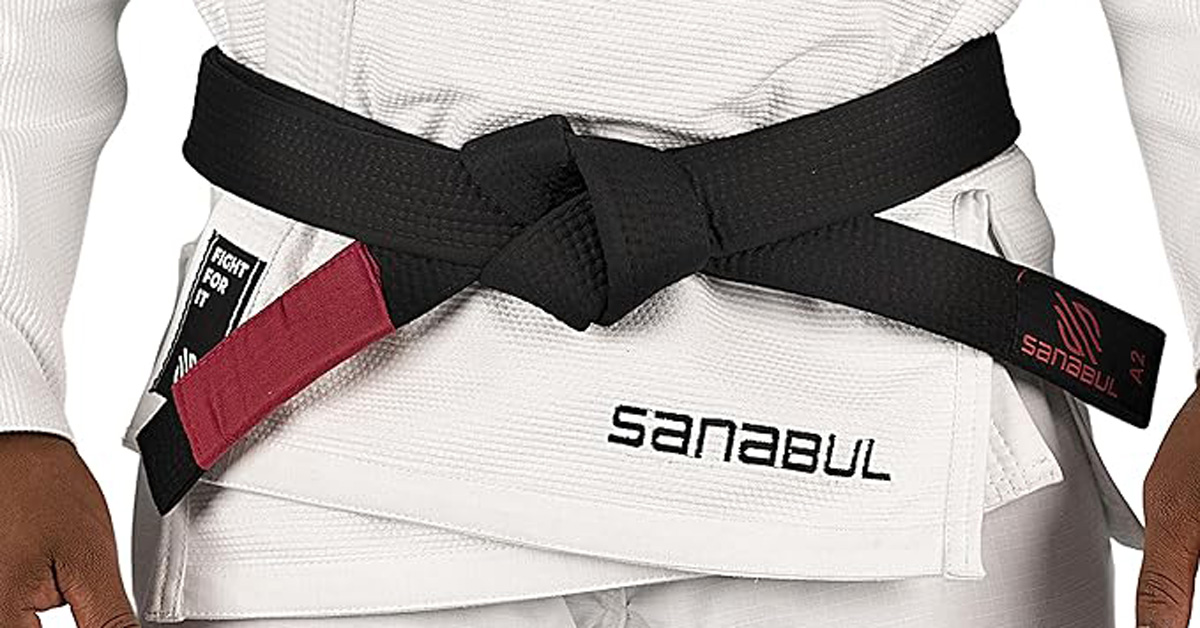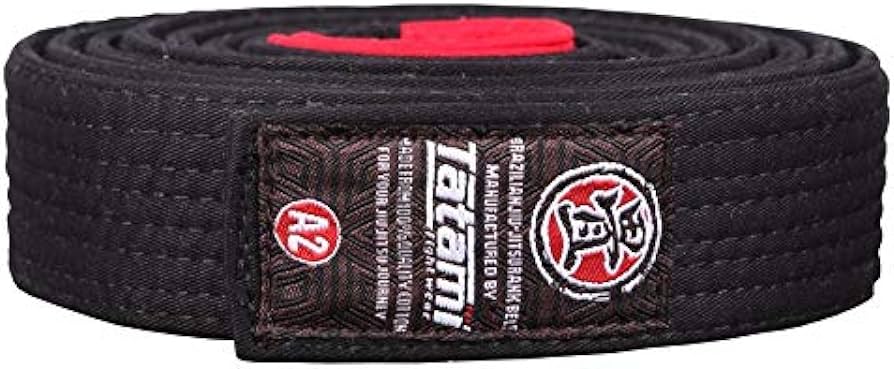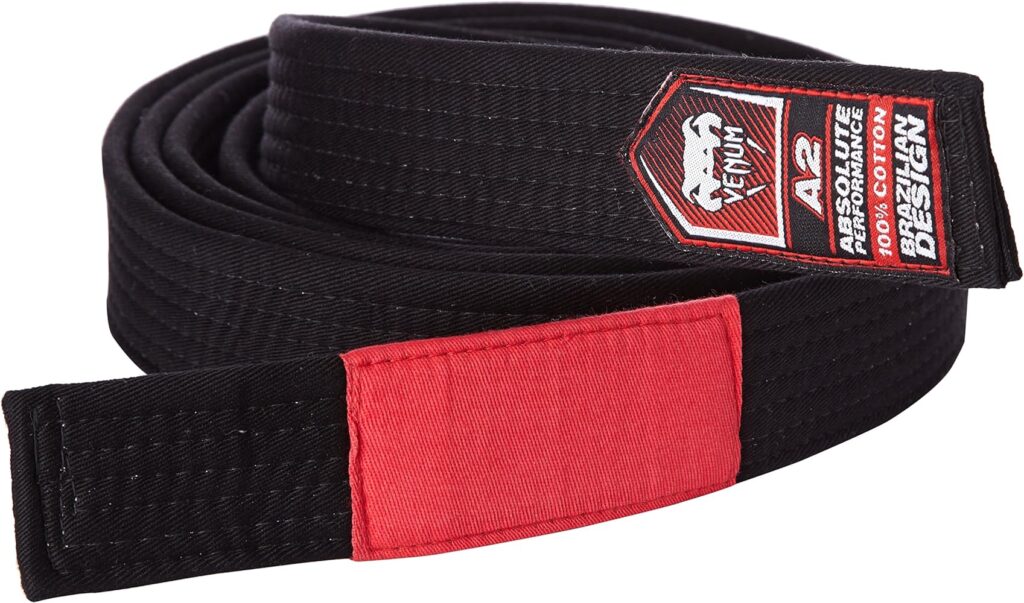BJJ Black Belt: A Full Breakdown

Earning a BJJ black belt is a huge achievement. It takes years of blood, sweat, and determination to earn this rank.
Here’s a full breakdown of the BJJ black belt and what it takes to earn this jiu-jitsu rank. Check out everything from the techniques you’ll need to know to help tips for earning your black belt.

What is a BJJ Black Belt?
The BJJ is the highest colored rank that a person can achieve within Brazilian Jiu-Jitsu. It’s one of the hardest ranks to achieve within the martial arts and takes years of dedication to earn.
How Long Does it Take to Get a BJJ Black Belt?
On average, it takes around 5 to 10 years or more to earn a BJJ black. Five years is the time if you’re extremely dedicated or it could take a jiu-jitsu practitioner 10 years or more to earn.
Must Know Techniques That a BJJ Black Belt Must Know
As a BJJ black belt, you must be proficient in every aspect of the martial art. Some jiu-jitsu schools do black belt tests to test a brown belt student’s knowledge to see if they’re worthy.
Other schools will just go by the decision of the head instructor. Either way, here is a list of techniques that a potential black belt must know.
Guard Passes
- +3 Closed Guard Passes
- +3 Open Guard Passes
- +3 Half/Quarter Guard Passes
- +3 Reverse Half Guard Passes
- +3 Butterfly Guard Passes
- +3 Spider Guard Passes
- +3 De La Riva Guard Passes
- +3 Lasso Guard Passes
- +3 Lapel Guard Passes
- +3 X Guard Passes
- +3 Single Leg X Passes
Guard Sweeps
- +3 Open Guard Sweeps
- +3 Butterfly Guard Sweeps
- +3 Half Guard Sweeps
- +3 De La Riva Guard Sweeps
- +3 Spider Guard Sweeps
- +3 Lasso Guard Sweeps
- +3 Lapel Guard Sweeps
- +3 X Guard Sweeps
- +3 Single Leg X Sweeps
Guard Submissions
- +3 Arm Locks/Setups
- +3 Kimura Setups
- +3 Triangle Choke Setups
- +3 Guillotine Choke Setups
- +3 Omoplata Setups
- +3 Gi Choke Variations/Setups
- +3 Wrist Lock Setups
- Baratoplata
- Gogoplata
- Reverse Triable
Mount
- +3 Armlock Variations
- Americana/Keylock
- Arm Triangle
- Kimura
- +3 Gi Chokes
- Triangle Choke
- Omoplata
- Wrist Lock
- Baratoplata
- Gogoplata
Back Mount
- +3 RNC Setups
- +3 Gi Chokes
- Armlock
- Reverse Triangle
Side Control/Side Control
- Americana/Keylock
- Kimura
- +2 Armlocks
- Wrist Lock
- Arm Triangle
- +2 Gi Chokes
- Reverse Triangle
- +3 Leg Locks
Takedowns & Throws
- +3 Double Leg Setups
- +3 Single Leg Setups
- +3 Single to Double & Vice-Versa
- Ouchi Gari
- Osoto Gari
- Uchi Mata
- +2 O Goshi Ippon Seoi Nage
- Tai Otoshi
- Koshi Garuma
- Ashi Barai
- Hane Goshi
- Harai Tsurikomi Ashi
- Sasae Tsurikomi Ashi
- O Guruma
- Ura Nage
Leg Attacks & Controls
- 50/50
- Ashi Garami
- Side Saddle
- Inside Sankaku/Honey Holey/411
- Sambo Leg Knot Variation
- Ankle Lock
- Toe Hold
- Kneebar
- Heel Hook
- Inside Heel Hook
What’s the Difference Between a BJJ Black Belt and Brown Belt?
There’s actually not that much difference between a BJJ black belt and brown belt. A brown belt in jiu-jitsu is basically an unpolished black belt.
They probably have the same skill and abilities as many black belts, but need some refinement. Once they clean up their game a bit and understand what it means to hold the rank, they’ll be ready.

Why is it Difficult to Earn a BJJ Black Belt?
Out of all the martial arts, the black belt in Brazilian Jiu-Jitsu is one of the hardest ranks to achieve. There are two main reasons for this level of difficulty.
- Time & Commitment
- The Responsibility
Time & Commitment
The time it takes to earn a black belt will take up a good percentage of your life. To earn a black belt in a 5 to 10 year span, you have to make time for your training and be committed.
You have to dedicate a portion of your time every week to training and never take time off the mat. When you take time off from training, you become less committed and are more likely to give up.
For this reason, many who take up learning jiu-jitsu will never earn a black belt. Only those who are truly dedicated and committed to the martial art will be able to earn this rank.
The Responsibility
As a BJJ practitioner goes up in rank, they have to carry more responsibility than they did with their previous belt. To carry the rank of BJJ black carries with it a lot of responsibility.
You not only have an obligation to keep training and continuing to build your skill, but also to your teammates. As a black belt, you’re one of the leaders of the school, whom the lower ranks seek guidance from.
This rank holds a lot of responsibility and not everyone who trains is willing to bear the burden of this responsibility. Once you show you’re willing to carry the responsibility of being a black belt, you’re ready to carry the rank.
Are There Age Restrictions For Earning a Black Belt?
An adult student must be at least 18 years of age in order to carry the BJJ black belt rank. Some jiu-jitsu schools won’t even allow any students under the age of 21 to be a black belt.
These are good rules, because they don’t diminish the value of the rank. Other martial arts like karate and taekwondo lost legitimacy by promoting students under 15 to black belt.
Nobody is going to take a martial art seriously, who has a 12 year old black belt. These age limits must be upheld to ensure value and legitimacy with these ranks within BJJ.

Tips For Earning A BJJ Black Belt
Lower belts often ask what tips they can get for earning a BJJ black belt. There are honestly no tips that they can be given other than doing two important things.
- Put In Your Time
- Don’t Quit
Put In Your Time
The difference between those that are black belts and those that are not is the black belts put in their time. Since they were BJJ white belts, the black belt students were dedicated and on the mats every week improving their skills.
They dedicated their time and effort to earning their belts and they more than deserve them. To earn a black belt, the main thing you have to do is put in your time on the mat.
Once you put in five years or more of building your skills, you will eventually earn your black belt. This is the most important thing you have to know about earning this rank.
Don’t Quit
As the highly respected Professor Chris Haueter said it best about earning a BJJ black belt. “It’s not who’s good, it’s who’s left.”
If you want to hold the black belt rank in jiu-jitsu, you have to dedicate your time and not quit. Most of who you started training with will drop out, while the remaining few will become black belts.
It didn’t matter if they were good or not, but what mattered is they didn’t quit. If you stay focused and don’t quit, you can be a black belt in jiu-jitsu.
Would Competing Help You Earn a BJJ Black Belt?
Competing is a great way to build your skills in order to become a black belt. However, if you’re going to compete, you must go into a tournament prepared.
If you go into a jiu-jitsu tournament unprepared, you are doing yourself a disservice and increasing the chance of injury.
Take the time to prepare yourself physically and mentally weeks out from a tournament. This will not only improve your chances of winning, but lessen the chance of injury and make the experience better.
Do I Have to be Good to Earn a Black Belt?
As stated in the Chris Haueter quote above, being good to earn a black belt is irrelevant. If you’re worthy of holding this rank, you’re better than 90% of those who train and 100% better than those who don’t.
If you put your time in, your skill will reflect this and you will be more than deserving to be a black belt.
What’s the Value of a BJJ Black Belt?
Being a BJJ black belt means that you dedicated a good portion of your time and energy into jiu-jitsu. You put years of blood, sweat, and tears into your training to get to this level.
It shows that you were not only dedicated, but passionate about the art of Brazilian Jiu-Jitsu. The price of the rank is invaluable and you will continue working to improve your skills.






